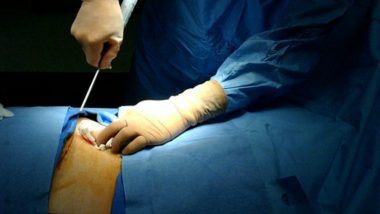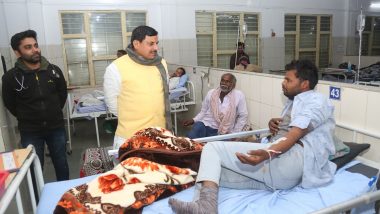Washington, February 28: Seems like, a new technology can help bone marrow patients. The new Children's National Health System-study co-led by Dr Williams suggested that a new imaging agent can safely show engraftment as early as days after transplant--giving a helpful and hopeful preview to patients and their doctors.
For patients with certain forms of leukemia, the only chance they have for a cure is to receive a massive dose of radiation and chemotherapy that kills their hematopoietic stem cells (HSCs), the cells responsible for making new blood, and then receive new HSCs from a healthy donor. While patients are waiting for these new cells to go to the bone marrow factory and begin churning out new blood cells, patients are left without an immune system.
Devoid of working HSCs for two to four weeks--or longer, if a first transplant doesn't take--patients are vulnerable to infections that can be just as deadly as their original cancer diagnosis. As they wait in the protected confines of a hospital, patients, who undergo HSC transplants, receive blood tests every day to gauge successful engraftment, searching for the presence of immune cells called neutrophils, had explained Kirsten M. Williams. The longer a patient goes without an immune system, the higher the chance that they'll develop a life-threatening infection.
The recent study evaluated an investigational imaging test called 18F-fluorothymidine (18F-FLT). It is a radiolabeled analogue of thymidine, a natural component of DNA. Studies have shown that this compound is incorporated into just three white blood cell types, including HSCs. Because it's radioactive, it can be seen on various types of common clinical imaging exams, such as positron emission tomography (PET) and computed tomography (CT) scans.
Thus, after infusion, the newly infused developing immune system and marrow is readily visible. To see whether this compound can readily and safely visualize transplanted HSCs, Dr Williams and colleagues tested it on 23 patients with various forms of high-risk leukemia. After these patients received total-body irradiation to destroy their own HSCs, they received donor HSCs from relatives or strangers.
Each of these patients had successful engraftment, reflected in blood tests two to four weeks after their HSC transplants. However, the results of the imaging exams revealed a far more complicated and robust story.
With 18F-FLT clearly visible in the scans, the researchers saw that the cells took a complex journey as they engrafted. First, they migrated to the patients' livers and spleens. Next, they went to the thoracic spine, the axial spine, the sternum, and the arms and legs. By one year, most of the new HSCs were concentrated in the bones that make up the trunk of the body, including the hip - where most biopsies to assess marrow function take place.
Interestingly, noted Dr Williams, this pathway is the same one that HSCs take in the fetus when they first form. The study also demonstrated that the radiation in 18F-FLT did not adversely affect engraftment. Additionally, images could identify the success of their engraftments potentially weeks faster than they would have through traditional blood tests--a definite advantage to this technique.
"Through the images we took, these patients could see the new cells growing in their bodies," Dr Williams said. "They loved that." Besides providing an early heads up about engraftment status, she added, this technique also could help patients avoid painful bone marrow biopsies to make sure donor cells have taken residence in the bones or at the very least help target those biopsies.
It also could be helpful for taking stock of HSCs in other conditions, such as aplastic anemia, in which the body's own HSCs fade away. And importantly, if the new healthy cells don't grow, this test could signal this failure to doctors, enabling rapid mobilization of new cells to avert life-threatening infections and help us save lives after transplants at high risk of graft failure. The research was published in the journal The Lancet Haematology.













 Quickly
Quickly





















